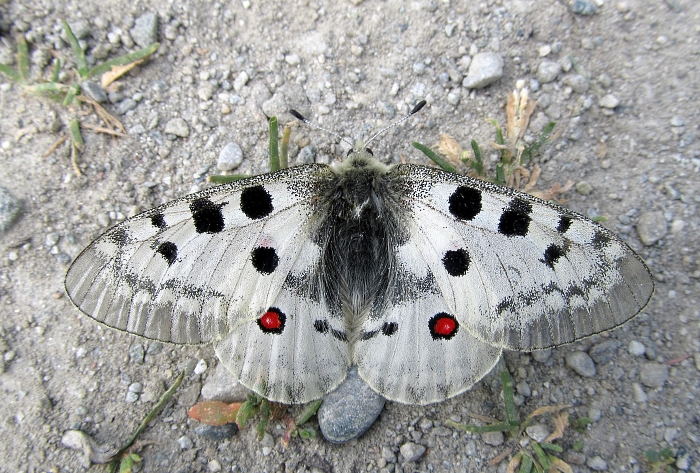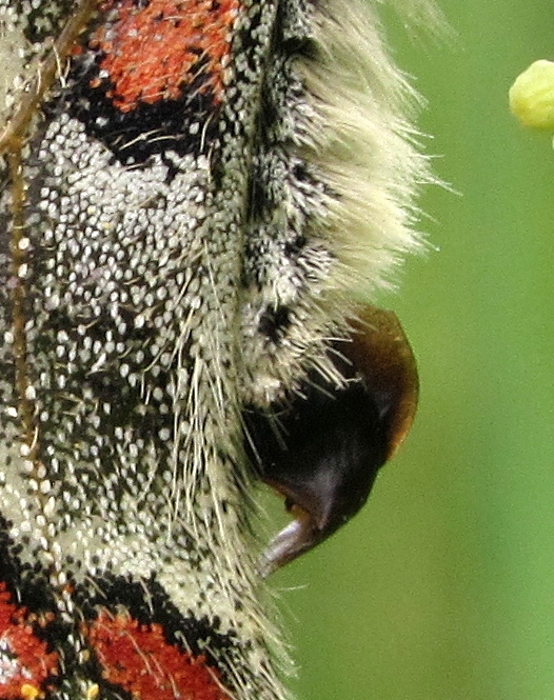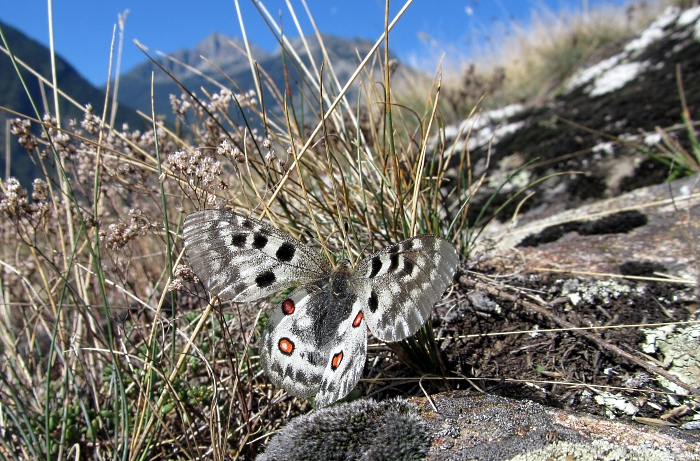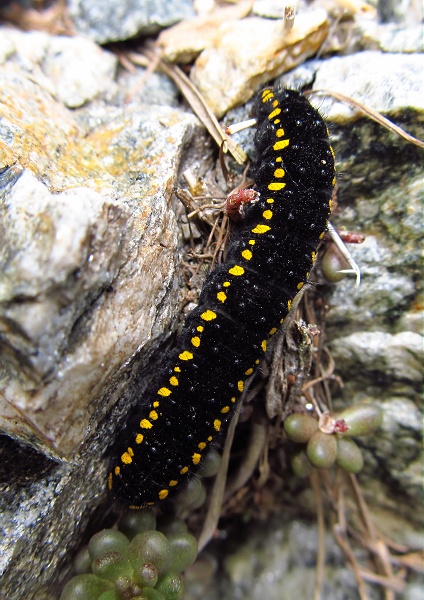
Apollo
Parnassius
apollo
Refresh page if pictures don't load fully:
Male, Switzerland, July 2015

Male, Switzerland, June 2014

Male, Switzerland, June 2018

Female, Switzerland, May 2014

Male on right, wooing (already mated) female on left, Switzerland, June
2018

Female showing sphragis, Switzerland, July 2017

Female abdomen showing
sphragis, June
2018

Close up of antennae, showing more or less uniform grey appearance
(c.f. small Apollo, which has striped antennae)





Males, July 2005, Val d'Aran

Female, July 2005, Val d'Aran

July 2006, Switzerland

June 2006, Switzerland

Fully grown caterpillar, June 2011

Distribution
The Apollo is an iconic mountain butterfly found in all the higher mountain ranges of Europe. Its distribution is naturally broken up, as it does not fly in the lowlands between ranges, so unsurprisingly there is a large number of named subspecies. Nevertheless, there is not a huge amount of obvious variation, from a casual point of view. The spots on the wings may be larger or smaller and sometimes orange rather than red, but everywhere this is a very distinctive butterfly, impossible to confuse with anything except its close cousin the small Apollo. Throughout most of its range, it is best distinguished from that species by the lack of any red in the costal spots of the forewing. Care needs to be taken though: some Spanish populations do show this red and some male small Apollos show very little or none. Another useful characteristic is the lack of strong banding on the antennae, shown in close-up higher up this page. Small Apollo shows distinct black and white or black and grey banding. Male Apollos also show a strong black mark near the trailing edge of the upperside forewing, lacking or much reduced in small Apollo - but again, care needs to be taken, as female small Apollos have a strong mark here.
Apollos fly in a single,
extended
generation from May until the autumn. It is said to hibernate as a
fully formed caterpillar within the egg and that it may remain so for
two seasonal cycles. Perhaps that explains the greatly protracted
emergence throughout the summer - some caterpillars delay emergence
from their egg. The caterpillars feed on Sedum and have a distinctive
black and yellow pattern (not to be confused with the caterpillars of
various burnet moths, which have a similar pattern).